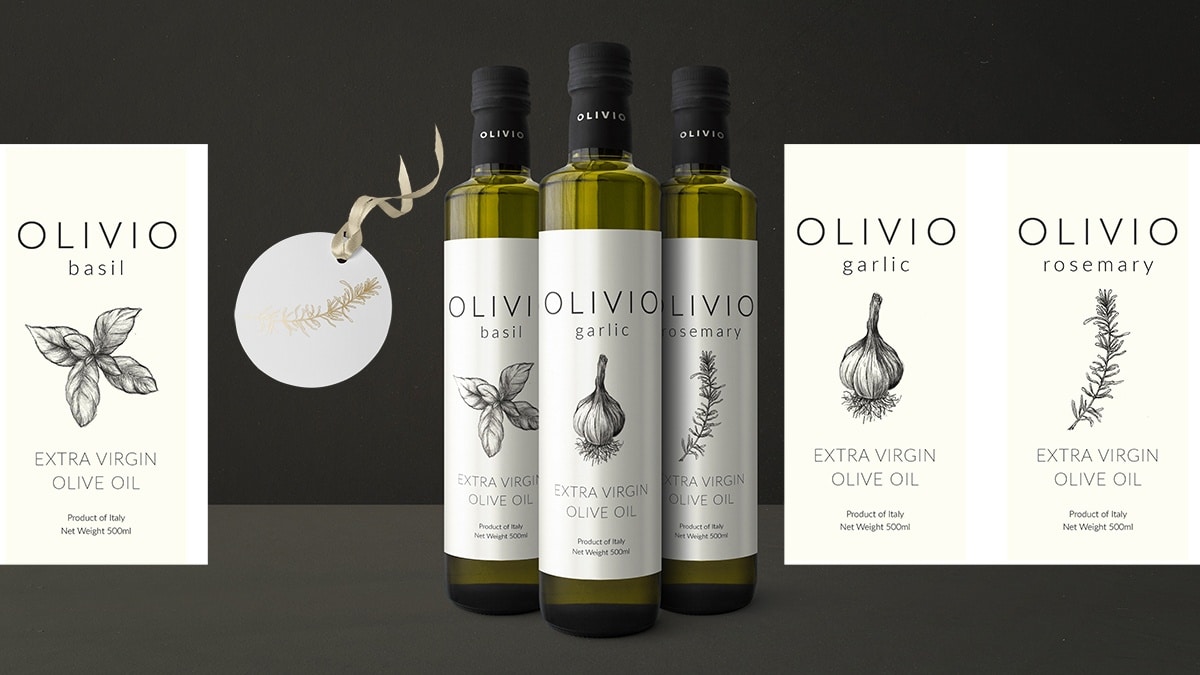DES 211: Graphic Design I
Design skills applied to real-world projects
Graphic designers today must be ready to tackle a wide range of projects from identity design to editorial design to product and packaging design. In this online graphic design course, you'll establish a firm foundation for professional design work. Gain insights from industry veterans and explore the challenges of designing posters, logos, magazine covers, book layouts, 3D designs, and brand identities. Hone your design process, as you research each project, develop concepts, work with expert instructor feedback, and begin to develop pieces for your portfolio.
 Student work by Riann Darley.
Student work by Riann Darley. Visit the Student Gallery.
About This Course
Project-Based Learning
Expand your graphic design skills in creative, portfolio building projects ranging from pasteup poster design to logo design, magazine and book design, and product packaging design.
What Skills Will I Develop?
Students in this course can expect to learn to:
- Develop graphic design work and concepts based on professional creative approaches and techniques.
- Apply traditional and digital design techniques to create polished graphic design pieces.
- Select and employ typography to communicate a specific message in logo designs and page layouts.
- Demonstrate knowledge of the characteristics of type to create cohesive and expressive logo designs.
- Employ a layout grid and professional layout rules to design engaging magazine covers, article spreads, book covers, and book chapter pages.
- Plan and produce magazine and book layout designs with a clear visual hierarchy of information.
- Design a basic three-dimensional product packaging design working from a client brief.
- Incorporate existing brand rules into product packaging designs and other graphic design projects.
- Develop an understanding of how to manage the graphic designer/client/vendor relationship, including promotion and billing.
- Organize work for use in physical and online design portfolios and produce a final portfolio piece that involves printing, labeling, package design, and photography.
What Software and Supplies Do I Need?
- Computer with Internet connection.
- Adobe Photoshop, Illustrator and Indesign or equivalent programs.
- Basic experience in graphic design and the above software.
Course Instructor(s)
The course is taught by the following instructor(s):
 Dr. Tamara Pavlock
is a designer dedicated to inspiring learning, art and creative thinking, and student success.
Dr. Tamara Pavlock
is a designer dedicated to inspiring learning, art and creative thinking, and student success.Course Outline
The Process of Design
How does a designer approach a project and develop a killer visual concept? This week you'll gain insights into the professional design process, learning the importance of research, concept development, and critique. A case study explores the evolution of an award-winning design concept, before you explore eight strategies for developing original visual ideas of your own. In the second part of the lesson, you'll learn about the tools and paste-up production methods used by many great designers of the 20th century. This will provide a historical context for how classic graphic design styles evolved into today's digital techniques.
Text and Typography
Actions may speak louder than words, but typography screams design. Skillful handling of text—including choice of typeface, type size, and alignment—is critical for any designer working today, in print or online. This week will review some typography fundamentals and evaluate how typography is used in composition. You'll examine important issues in selecting a typeface, including style, tone, and expression. Case studies explore the important role of visual identity for any publication.
The Shape of Design
Page layout skills are crucial for any graphic designer. Our focus this week will be some essential concepts for magazine layout. You'll learn key issues in using a grid to plan layout and text treatment, looking at how to research and plan the structure of a page or spread. A case study analyzes how a famous designer created a magazine layout, teaching you important terms in text treatment. You'll pick up rules of thumb for effective layout design for magazine covers and spreads, looking at highly effective examples along the way.
Paper and Publishing
Our objective this week is to give you an insight into the nature of the publishing industry, that exotic world of full-bleed images, embossed jacket designs, and pre-press checking. You'll begin with an overview of publishing for old media and new media and learn about book design through an in-depth case study. You will explore important paper terminology including embossing, die cutting, and more.
Products and Packaging
Why do some products sell while others simply gather dust on the shelves? Once a product hits the market, packaging design can make or break it. In this session we will explore how visual messages are used to shape consumer perceptions. You will learn how typography, color, and imagery work together to convey a message to consumers.
Business and Production
Our course concludes with one designer's perspective on the business and production aspects of design. You'll begin by exploring some options for a graphic design career, whether you are freelance or in-house. You'll learn tips for promoting yourself, working with clients, and managing your design jobs professionally. In the second part of the lesson, you'll learn principles for working with printers and get an overview of the ten steps in the print production process. You'll also learn pointers for designing and developing your portfolio of work.
Frequently Asked Questions (FAQ)
How Do The Courses Work?
Our courses are project-based and instructor-led. In each course you’ll complete a series of lectures, projects, discussions, and critiques designed to stretch your creative skills. Weekly assignment deadlines keep you on track, and with no set-logins or Zoom meetings, you can build your studies around your schedule.
Who Are The Instructors?
Our courses are developed and taught by our industry-leading faculty of creative professionals. This means that you’ll learn in-demand skills, get feedback on your work, and build a portfolio of creative work. View our Student Gallery for featured student projects.
When Can I Start?
Classes start January, April, and August, and this course is completed in a 15-week term. College credit from this course can be applied to a range of Degree and Certificate programs at Sessions College. You can enroll in this course on an individual basis or as part of a program.
Explore our Programs: Bachelor's Degree | Associate Degree | Undergraduate Certificate
How Do I Register?
To register for a program, complete our program application. To register for this course on an individual basis, please contact our admissions team at admissions@sessions.edu. An Admissions Advisor will contact you to setup your enrollment.
| Course Tuition and Fees | |
|---|---|
| Tuition | $510/credit |
| Registration Fee* | $200 |
| Total Course Price | $1730 |
Registration fees are nonrefundable after 5 days from enrollment.
Is Sessions College accredited?
Yes. Since 2001, Sessions College has been accredited by the Distance Education Accrediting Commission (DEAC). The Distance Education Accrediting Commission is listed by the U.S. Department of Education as a recognized accrediting agency and is recognized by the Council for Higher Education Accreditation (CHEA).